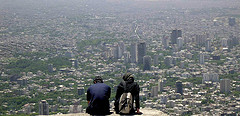- 1 read

Iranians continue to protest the results of their presidential election, which was held on Friday, June 12th, 2009. Tehran and other cities have seen the largest street protests and rioting since the 1979 Iranian Revolution. Supporters of reform candidate Mir Hossein Mousavi upset over the announced loss, suspect voter fraud. They took to the streets both peacefully and, in some cases, violently to express their frustrations. Once these issues have been resolved, the Iranian government will still have some major remaining problems to fix, one of which is the state of their environment.
Environmental issues in Iran include vehicle emissions, refinery operations, and industrial effluents which contribute to the overall poor air quality. Most cars in Iran use leaded gas and lack emissions control equipment resulting in Tehran being rated as one of the world’s most polluted cities. However, there is a plan in place to replace existing public transportation with buses and cars that run on natural gas. This won’t completely solve the problem since energy prices are kept artificially low in Iran through heavy state subsidies, resulting in highly inefficient and polluting consumption patterns.
Much of Iran’s territory has fallen victim to overgrazing, desertification and/or deforestation. Industrial and urban wastewater runoff has contaminated rivers and coastal waters and threatened drinking water supplies. Wetlands and bodies of fresh water increasingly are being destroyed as industry and agriculture expand, in addition to the oil and chemical spills, which have harmed aquatic life in the Persian Gulf and the Caspian Sea.
Although a Department of Environment has existed since 1971, Iran has not yet developed a policy of sustainable development because short term economic goals have taken precedence.

